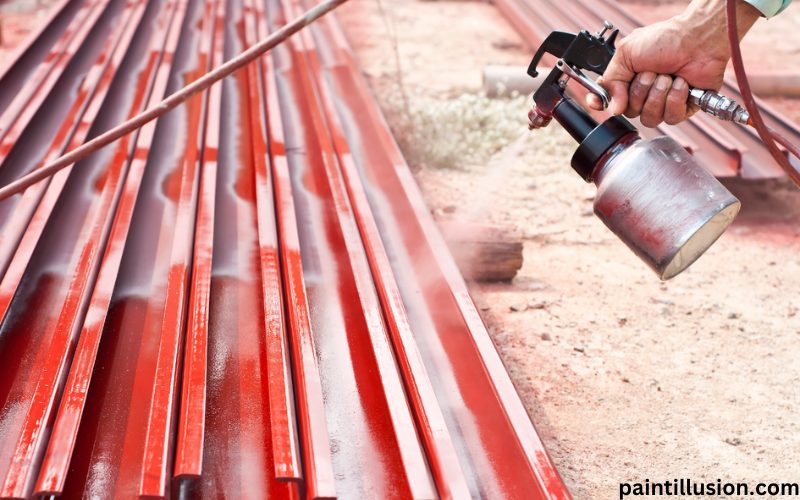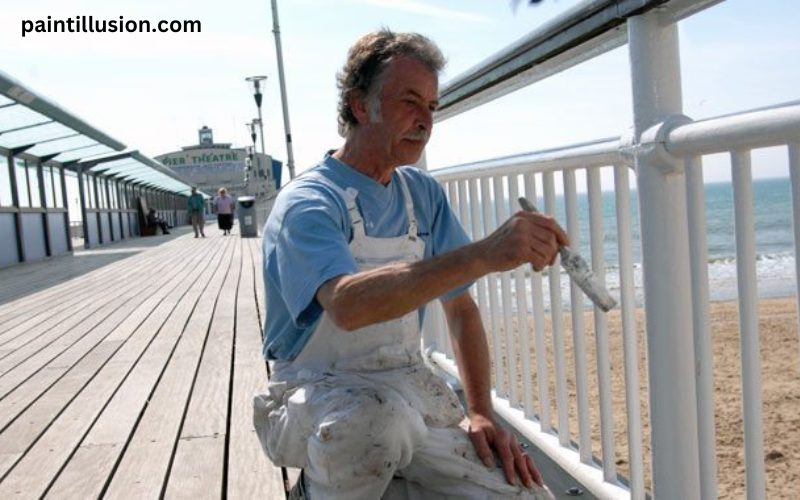Powder coating has become a popular choice for protecting and enhancing the appearance of various metal surfaces. It is a durable and long-lasting finish that provides excellent resistance to corrosion, chemicals, and UV rays. Powder coating involves applying a dry powder to a metal surface and then curing it under heat, creating a tough and attractive coating.
What is Powder Coat?
Powder coat is a type of coating that is applied as a free-flowing, dry powder to the surface of a metal object. The powder is electrostatically charged and adheres to the metal, forming a smooth and uniform finish. The coated object is then heated in an oven, causing the powder particles to melt and flow together, creating a strong and protective layer.
Can You Paint Over Powder Coat?
Yes, you can paint over powder coat, but there are a few factors to consider before doing so. While powder coating provides excellent adhesion and durability, it can be challenging to paint over due to its smooth and non-porous surface. However, with proper preparation and the right techniques, you can achieve a successful paint job over powder coat.
Factors to Consider Before Painting Over Powder Coat
Before you start painting over powder coat, there are a few essential factors to consider. First, assess the condition of the powder coat. If it is damaged, chipped, or peeling, it is recommended to strip the entire coating before applying paint. Trying to paint over a damaged powder coat may result in an uneven and unsatisfactory finish.
Next, consider the type of paint you intend to use. Not all paints are suitable for application over powder coat. It is crucial to choose a paint specifically formulated for metal surfaces and that offers good adhesion to smooth and non-porous surfaces. Additionally, consider the color and finish of the paint you want to apply, as it may affect the final appearance of the painted surface.

Preparing the Surface for Painting
Proper surface preparation is crucial for achieving a successful paint job over powder coat. Start by thoroughly cleaning the surface using a mild detergent and water to remove any dirt, grease, or contaminants. Rinse the surface thoroughly and allow it to dry completely before proceeding.
Once the surface is clean and dry, lightly sand it using a fine-grit sandpaper or a sanding sponge. This will create a rough texture on the smooth powder coat, allowing the paint to adhere better. After sanding, wipe away any dust or residue using a clean, lint-free cloth.
Choosing the Right Paint for Painting Over Powder Coat
When it comes to choosing the right paint for painting over powder coat, it is essential to select a high-quality paint specifically designed for metal surfaces. Look for a paint that offers good adhesion to smooth and non-porous surfaces, as well as excellent durability and weather resistance.
Consider using a primer designed for metal surfaces before applying the paint. A primer will provide additional adhesion and help ensure a smooth and even finish. Additionally, choose a paint color and finish that suits your desired aesthetic and complements the surrounding environment.
Steps to Paint Over Powder Coat
To paint over powder coat, follow these steps for a successful result:
- Prepare the surface by cleaning it thoroughly and sanding it lightly to create a rough texture.
- Apply a primer designed for metal surfaces to enhance adhesion and ensure a smooth finish.
- Allow the primer to dry according to the manufacturer’s instructions.
- Apply the paint using a brush, roller, or spray gun, following the manufacturer’s recommended application technique.
- Allow the paint to dry completely between coats, applying additional coats as needed to achieve the desired coverage and finish.
- Once the final coat is applied, allow the paint to cure according to the manufacturer’s instructions.
- Inspect the painted surface for any imperfections and make any necessary touch-ups.
Tips for a Successful Paint Job Over Powder Coat
To ensure a successful paint job over powder coat, consider the following tips:
- Take your time to properly prepare the surface before painting. This includes cleaning, sanding, and using a primer.
- Follow the manufacturer’s instructions for the paint and primer, including drying and curing times.
- Apply the paint in thin, even coats to avoid runs and drips.
- Allow each coat of paint to dry completely before applying the next coat.
- Use a high-quality paintbrush, roller, or spray gun for a professional-looking finish.
- Consider applying a clear protective coat over the paint to enhance durability and resistance to damage.
Common Mistakes to Avoid When Painting Over Powder Coat
Avoid these common mistakes when painting over powder coat to ensure a satisfactory result:
- Failing to properly clean and prepare the surface before painting.
- Using a paint that is not specifically designed for metal surfaces or lacks good adhesion to smooth and non-porous surfaces.
- Applying paint too thickly, resulting in runs and drips.
- Rushing the drying and curing process, which can lead to poor adhesion and premature paint failure.
- Ignoring the manufacturer’s instructions for the paint and primer.
Conclusion
In conclusion, it is indeed possible to paint over powder coat with proper preparation and the right techniques. By considering the condition of the powder coat, choosing the right paint, and preparing the surface adequately, you can achieve a successful and long-lasting paint job over powder coat. Remember to follow the steps, tips, and avoid common mistakes to ensure a professional-looking finish. Whether you want to change the color or enhance the appearance of a powder-coated surface, painting over powder coat can be a viable option with the right approach and attention to detail.


Наши статьи базируются на современной диетологии [url=https://websight.ru/]https://websight.ru/[/url]